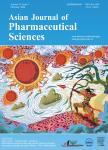Additive manufacturing of prototype elements with process interfaces for continuously operating manufacturing lines
Additive manufacturing of prototype elements with process interfaces for continuously operating manufacturing lines作者机构:Department of PharmacyUniversity of Copenhagen
出 版 物:《Asian Journal of Pharmaceutical Sciences》 (亚洲药物制剂科学(英文))
年 卷 期:2018年第13卷第6期
页 面:575-583页
核心收录:
学科分类:1007[医学-药学(可授医学、理学学位)] 1002[医学-临床医学] 10[医学]
基 金:funded by Innovation Fund Denmark Project:High Quality Dry Products with Superior Functionality and Stability–Q-Dry File No:5150-00024B
主 题:3D printing Continuous mixing Near-infrared spectroscopy Additive manufacturing
摘 要:Rapid prototyping based on in silico design and 3D printing enables fast customization of complex geometries to multiple needs. This study utilizes, additive manufacturing for rapid prototyping of elements for continuously operating mixing geometries including interfaces with process analytical technology(PAT) tools, to show that 3D printing can be used for prototyping of both parts of production line and PAT interfacing solution. An additional setup was designed for measuring the dynamic calibration samples for a semi-quantitative near infrared(NIR) spectroscopic model. The powder was filled in a small calibration chamber and in-line NIR spectra of calibration samples were collected from moving material while mimicking the powder flow dynamics in a typical continuous mixer. This dynamic powder mixing system was compared with a static powder calibration model where the NIR probe was placed at different positions on a static sample. Principal component analysis(PCA) revealed that the 3D printed device with dynamic measurement of the NIR spectra had more potential for quantitative analysis. With the prototype continuous mixer, two differently placed process interfaces for NIR spectroscopic monitoring of the powder mixing were evaluated. With this approach, the importance of positioning the process analytical tools to assess the blend uniformity could be demonstrated. It was also observed that with the longer mixing geometry, a better mixing result was achieved due to a larger hold up volume and increased residence time.



